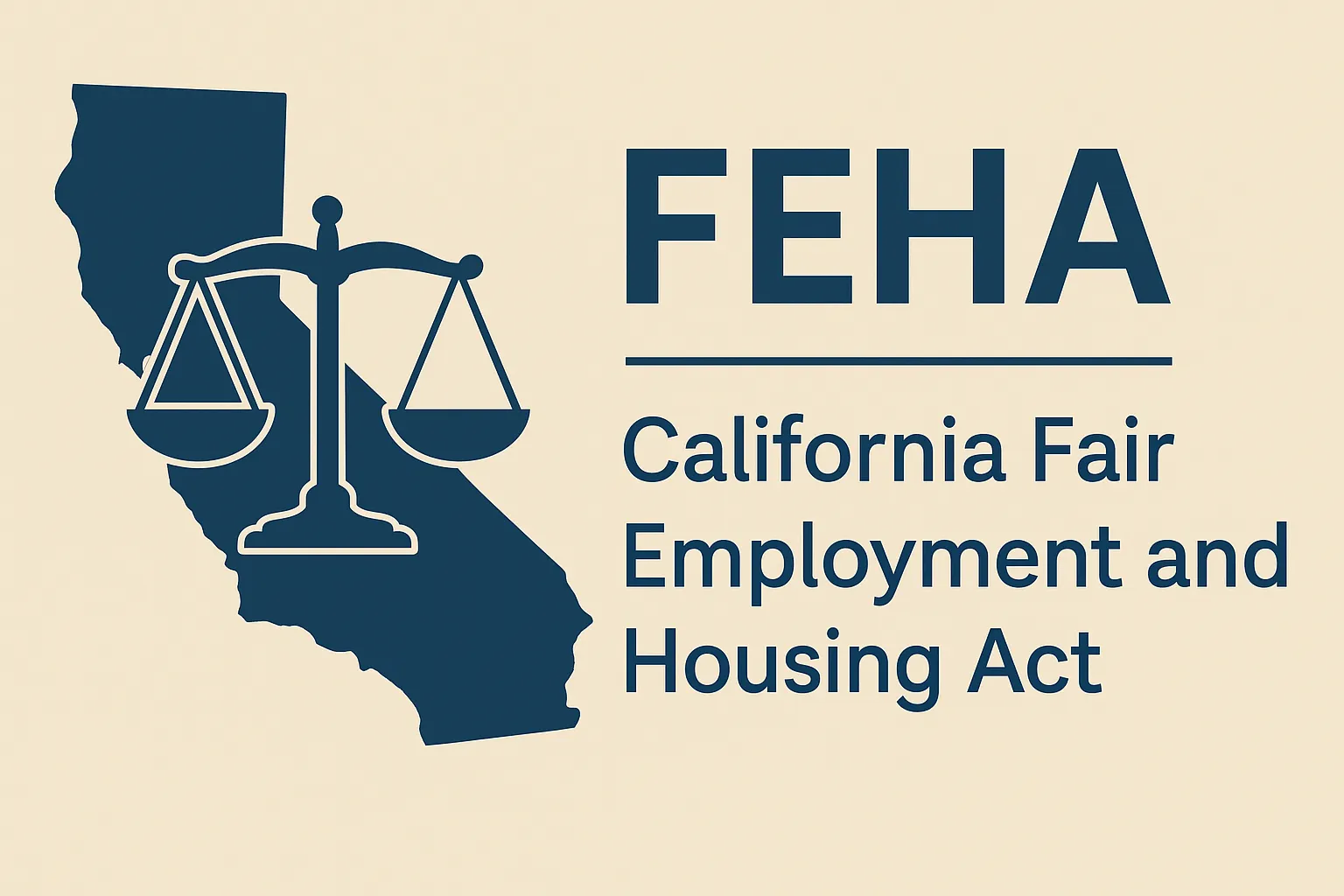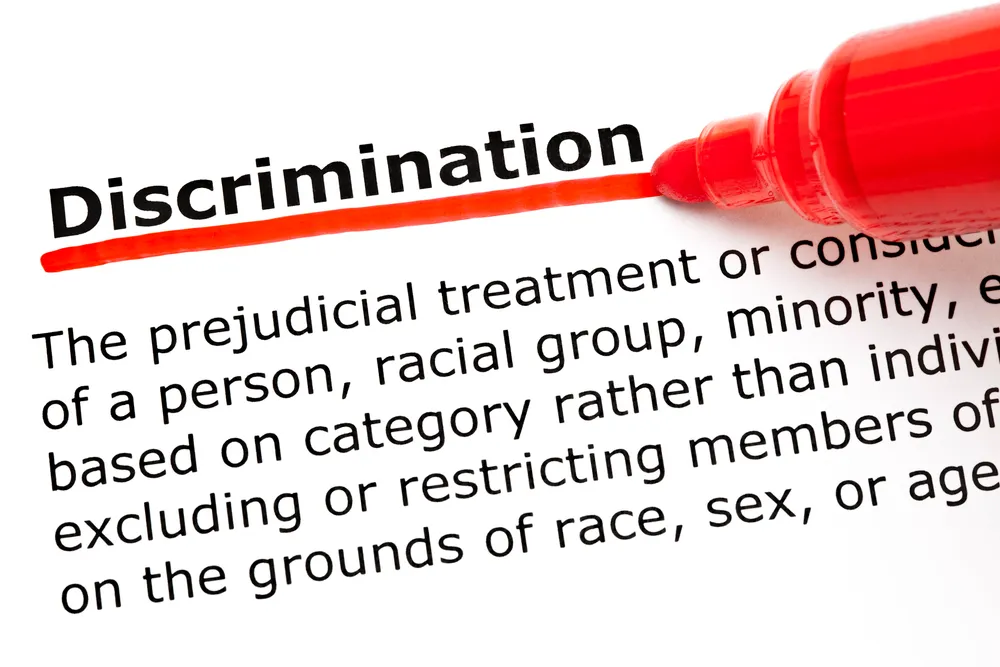California FEHA: Protecting Employees from Workplace Discrimination and Harassment

The California Fair Employment and Housing Act (FEHA) is one of the most robust workplace discrimination laws in the United States. This California discrimination law protects employees and job applicants from unfair treatment at work. It covers a broad range of personal characteristics – from race and gender to age and disability. These protections ensure everyone has equal opportunity in the workplace. Not only does it forbid discrimination, but it also makes workplace harassment and retaliation illegal.
Understanding FEHA and Its Broad Protections
This law applies to most employers in the state. It is unlawful for employers with 5 or more employees to discriminate based on any protected characteristic. These protections cover every stage of employment, including hiring, promotions, pay, and termination. The law also specifically prohibits harassment in all workplaces – even those with only one worker. Crucially, it also protects workers from retaliation if they speak up about discrimination or harassment.
Protected Characteristics Under FEHA
California law explicitly protects a wide array of personal characteristics. In other words, an employer cannot treat you unfairly or harass you because of any of the following protected characteristics:
- Race (including color)
- Ancestry or national origin
- Religion or creed (including religious dress and grooming practices)
- Sex / Gender (including pregnancy, childbirth, breastfeeding, and related medical conditions)
- Gender identity and gender expression
- Sexual orientation
- Marital status
- Age (40 and over)
- Physical or mental disability
- Medical condition or genetic information
- Military or veteran status

This comprehensive list shows that California’s law goes beyond federal workplace discrimination laws. For instance, Title VII of the federal Civil Rights Act does not explicitly list marital status or gender identity as protected categories. California law also explicitly protects employees from discrimination based on sexual orientation. (Federal law only recently clarified that “sex” discrimination includes LGBTQ+ status.) Essentially, the law ensures that employees are judged on their skills and performance – not on personal traits they cannot change.
Harassment and Retaliation Are Also Illegal
Importantly, the law doesn’t just ban discriminatory decisions like firing or demotions. It also prohibits harassment in the workplace related to any protected trait. Harassment can include slurs, offensive jokes, unwanted touching, or displaying derogatory images. Any behavior that creates a hostile work environment is unlawful. Employers (and even individual harassers) can be held responsible for such conduct.
What’s more, retaliation is illegal too. This means your boss cannot fire, demote, or otherwise punish you for reporting discrimination or harassment. The same protection applies if you participate in an investigation. These provisions encourage workers to speak up, knowing the law is on their side.
How FEHA Differs from Federal Law (Title VII, ADA, etc.)
FEHA expands on federal protections in important ways. It applies to employers with 5 or more employees (federal laws like Title VII and the ADA generally cover only larger employers), so it protects many workers at smaller companies. It also explicitly covers additional traits such as sexual orientation, gender identity, gender expression, marital status, and veteran status – categories not all included under federal law.
Moreover, the law’s FEHA disability protections are stronger: It defines disability more broadly than the ADA and requires employers to provide reasonable accommodations and engage in a good-faith interactive process with disabled employees.
Examples of Workplace Discrimination and Harassment
To see how these protections work in real life, let’s look at a few fictional examples. These scenarios illustrate common ways employers might violate FEHA – and how the law would protect the employee in each case:
- Denied Disability Accommodation: Imagine an employee with a physical disability who uses a wheelchair. She requests a reasonable accommodation so she can do her job. Her employer outright refuses this request and then starts giving her unfair negative performance reviews because of her disability. Employers must discuss and offer reasonable accommodations rather than flat-out refuse. By denying her request and then penalizing her, the company clearly violates the law.
- Retaliation After Reporting Harassment: Suppose a young man endures ongoing racist jokes from a coworker. He reports this harassment to HR. However, instead of addressing the issue, the employer fires him soon after. This retaliatory firing for reporting harassment is strictly forbidden under FEHA, giving him grounds to file a complaint.
In each of these examples, the employee would have the right to pursue a legal claim. The law is designed to hold employers accountable for such unfair practices. Yet, as these scenarios show, proving discrimination or harassment often comes down to documentation and evidence.
Documenting Incidents and Seeking Help
If you believe you’re experiencing workplace discrimination or harassment, one of the most empowering steps you can take is to document what’s happening. Documenting workplace discrimination in detail serves two important purposes. First, it creates a time-stamped record that can corroborate your story later. You’ll have dates, times, locations, and witnesses noted for each incident. Second, it helps you see patterns over time.
For effective documentation, jot down each incident as soon as possible (noting the date, time, who was involved, and what happened) and save any evidence such as emails or photos related to the mistreatment.
How WorkplaceWitness Can Help Employees Facing Discrimination
WorkplaceWitness.AI offers a secure, private platform to document incidents of harassment or discrimination as they happen. You can log exactly what happened, when, and who was involved. Each entry is automatically time-stamped and stored in a legally relevant format.
For one, it keeps your records organized and safe. You won’t risk losing a notebook or accidentally deleting a file. Moreover, it can help you spot patterns by chronologically organizing your entries. For example, you might notice a pattern: a supervisor’s mistreatment tends to happen right after you meet a sales target. That could hint at jealousy or another motive.
Furthermore, when you’re ready to act, you can easily export your documented incidents. Having a compiled record saves time and strengthens your case.
In short, how WorkplaceWitness can help is by empowering you to document workplace discrimination. Using a dedicated tool ensures each incident is recorded while fresh, creating evidence to back you up if you pursue justice. Remember, under FEHA and other workplace discrimination laws, you have the right to speak out without fear. With strong documentation and these protections on your side, you can hold employers accountable and help create a fairer workplace.
Stay Updated
Get the latest updates about workplace rights and our app launch.